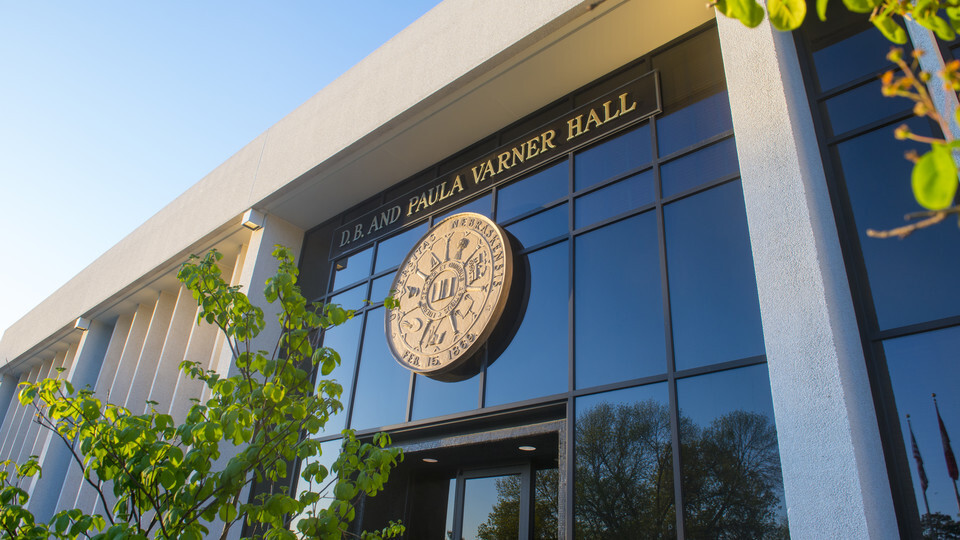· 4 min read
Tuition freeze, strategic investments highlight 2021-22 NU budget

The University of Nebraska will freeze tuition across the system and invest in strategic priorities including student aid, faculty competitiveness and building maintenance under a proposed 2021-22 operating budget announced by Ted Carter, NU president.
The budget, which will go before the Board of Regents on June 25, continues a multi-year plan built last year by Carter and the chancellors to address fiscal challenges created by COVID-19 while also positioning the university for long-term growth and success. The budget plan advances key pillars identified in Carter’s systemwide strategic plan related to student access and success, faculty support and resource efficiency.
Carter praised the NU chancellors and their leadership teams for what he called a bold and disciplined approach throughout the pandemic that has allowed all campuses to maintain momentum even during a challenging period.
“With this budget, the University of Nebraska is in a position of strength. We have done a remarkable job of managing the challenges in front of us while not losing sight of our priorities,” Carter said.
“The budget we’re bringing forward concentrates resources in the areas that matter most: our 52,000 students, our faculty and the success of our state. It will require discipline and tough choices about our spending — yet also positions us to capitalize on this unique moment for higher education and steer the future direction of the University of Nebraska.”
Carter thanked members of the Legislature and Gov. Pete Ricketts for supporting the university’s 2021-23 state appropriations request, which cleared the way for a two-year, across-the-board tuition freeze across the NU system. With the two-year freeze, all University of Nebraska campuses will remain among the most affordable institutions in their peer groups.
Additionally, the new Nebraska Promise financial aid program was a key driver of the university’s enrollment growth this year, particularly among underrepresented students. Nebraska Promise provides full tuition coverage for low- and middle-income Nebraska students and reached an additional 1,000 students this year who did not qualify under the university’s previous need-based financial aid program.
That enrollment growth — better than projected when Carter and the chancellors built the budget plan — provides additional flexibility for the chancellors to invest in strategic priorities.
After freezing salaries this year for non-unionized employees, the university will invest in compensation in order to remain competitive for top talent. The budget plan includes a 1.5 percent increase in the merit pool for non-unionized employees in 2021-22 and a 3 percent increase in the merit pool for 2022-23. The plan ensures that all NU employees — unionized or not — can earn 4.5 percent increases over a three-year period.
Beyond that, NU will invest $6 million in salaries at the University of Nebraska-Lincoln and University of Nebraska Medical Center, where faculty lag behind their peers.
“Our faculty are among the best in the world at what they do, and it’s important that we compensate them appropriately,” Carter said. “For too long we have not been able to make progress in closing the gap with our peers. Now we’re doing something about it.”
Finally, the budget invests in building maintenance and renewal, part of a 40-year effort made possible by legislation this year from Sen. John Stinner of Gering to address aging infrastructure across the NU system. The legislation commits the state and university to make matching investments in deferred maintenance through 2062 in order to ensure quality spaces for student and faculty learning and working. The university recently took an initial phase of bonds to the market, generating $400 million in proceeds to begin maintenance work on all campuses.
Carter noted that the strategic investments are made possible by the university’s commitment to $43 million in self-imposed reallocations. While reallocations require difficult decisions, the process also is allowing the university to use its resources for maximum impact.
“When COVID hit, we knew we couldn’t simply hunker down and wait for this period to end. The needs of our workforce and our state are too important,” Carter said. “We made a plan, we are sticking to it, and as higher education emerges from the pandemic, the University of Nebraska is in a position to lead the way forward.”







